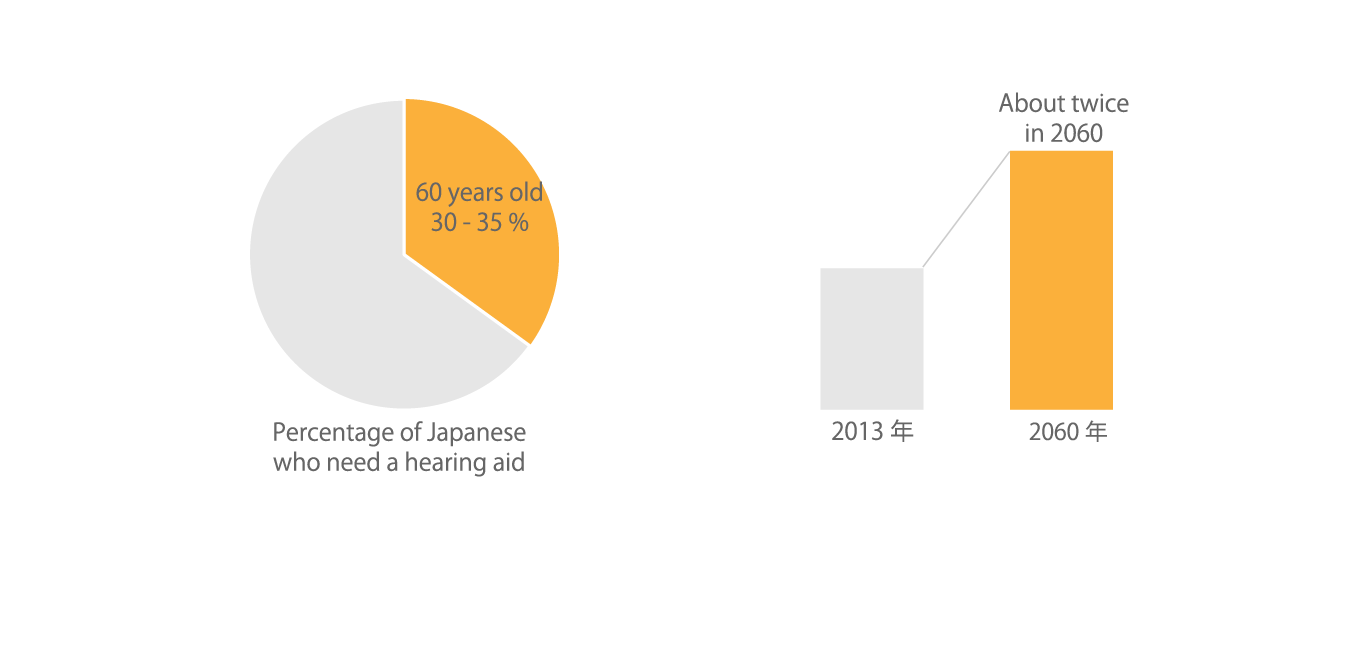Approaches to Hearing Loss —a Disorder Increasing in the Modern Society
Hearing loss is considered to be one of the most common causes of inconveniences in people’s daily lives around the world. The number of people suffering from hearing loss that is above the moderate level is estimated to be 6 million in Japan and 500 million in the world, which is equivalent to 30 to 40 per cent of the population of 65 or older. The population with hearing loss at the mild level is even larger, which is estimated to be 3 billion globally. Hearing loss is known to be a factor that deteriorates quality of life and a risk factor for depression and dementia. Its socio-economic loss is estimated to be 750 billion US dollars or 75 trillion Japanese yens.
 In recent years, hearing loss resulting from use of smartphones and other modern devices is gaining attention. According to recent research, excessive exposure to noise in one’s youth increases a risk of accelerated deterioration of hearing after becoming an adult. The population with hearing loss is projected to double by 2060. WHO has thus established “World Hearing Day” to raise awareness of deafness prevention. As Japan experiences a hyper-aging society, the population with hearing loss is estimated to reach 10 million by 2025 when the baby boomers reach age 75 or older. This is equivalent to the total population of diabetic patients.
In recent years, hearing loss resulting from use of smartphones and other modern devices is gaining attention. According to recent research, excessive exposure to noise in one’s youth increases a risk of accelerated deterioration of hearing after becoming an adult. The population with hearing loss is projected to double by 2060. WHO has thus established “World Hearing Day” to raise awareness of deafness prevention. As Japan experiences a hyper-aging society, the population with hearing loss is estimated to reach 10 million by 2025 when the baby boomers reach age 75 or older. This is equivalent to the total population of diabetic patients.
Despite such gravity of medical and social impact of hearing loss, its causal treatment remains scarce. With regard to chronic sensorineural hearing loss, in particular, no publication on new treatment has been made for long. As of today, the only way to address hearing loss is use of devices such as hearing aid when the symptoms have been aggravated. While a number of startup companies around the world are competing to develop modern treatments for hearing loss, the focus is disproportionately on gene therapy and regenerative medicine, and thus there is little prospects as yet for development of adequate treatment for age-related and other types of hearing loss.